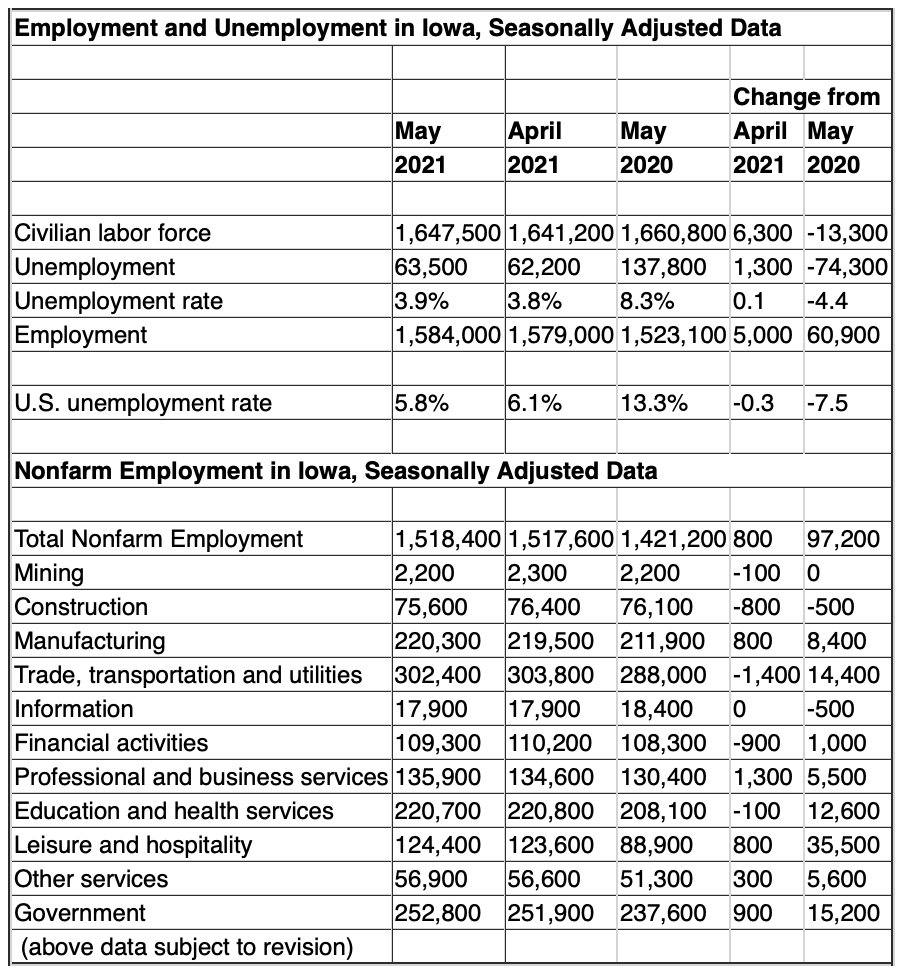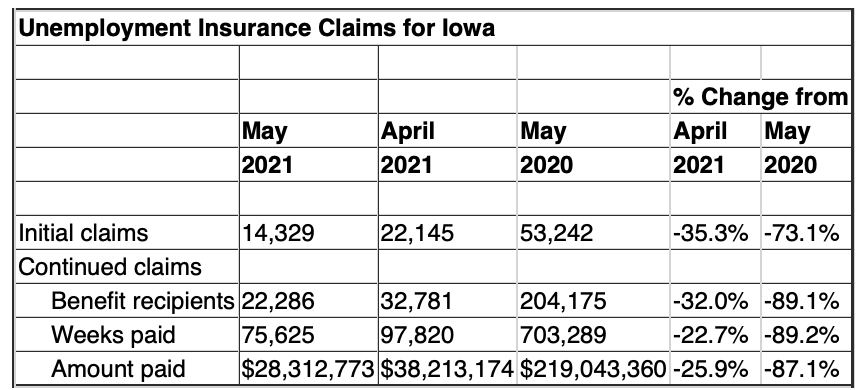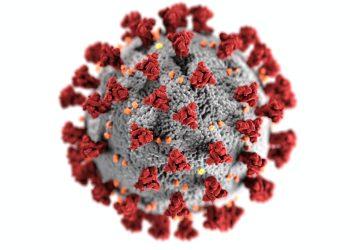DES MOINES, Iowa – Iowa’s unemployment rate increased slightly to 3.9 percent from 3.8 percent in April. The state’s jobless rate was 8.3 percent one year ago. Iowa’s labor force participation rate increased from 66.1 percent in April to 66.4 percent in May as the total number of working Iowans increased to 1,584,000 in May. The number of unemployed Iowans and the seasonally adjusted unemployment rate increased slightly by 1,300 and 0.1 percent respectively. The U.S. unemployment rate decreased to 5.8 percent in May.
“The positive takeaways from May’s monthly job report are that the number of Iowans in the workforce increased by 6,300; the number of Iowans working increased by 5,000 and claims numbers in May were down significantly from the previous month,” sBeth Townsend, Director of Iowa Workforce Development, said. “While the number of unemployed Iowans ticked up slightly, the overall trend is positive for Iowa as we see more and more Iowans returning to the workforce.”
This figure was 5,000 higher than April’s number of 1,579,000 and 60,900 higher than May 2020. The number of unemployed Iowans increased to 63,500 in May from 62,200 in April. The current estimate is 1,300 higher than last month and 74,300 lower than a year ago. The labor force participation rate has gradually increased every month this year.
Iowa recently ended its participation in the federal pandemic-related unemployment benefit programs that went into effect on June 12, which should be reflected in June’s report released sometime in July.
Seasonally Adjusted Nonfarm Employment
Total nonfarm employment in Iowa increased slightly in May, adding 800 jobs compared to April and lifting the jobs total to 1,518,400. Combined, private industries were little changed this month and goods-producing industries returned mixed results with hiring in manufacturing being offset by a decline in construction and mining, logging, and natural resources. Government continues to trend up with gains in the federal, state, and local levels in May. This gain marks the fifth consecutive monthly increase for government which is now up 15,200 jobs versus this time one year ago. Private industries have pared jobs in three of the last four months but did experience a recent high in March. Overall, private industries have added 82,000 jobs compared to last May.
Professional and business services added the most jobs this month (+1,300). This increase follows a drop of 1,400 in April. Administrative support and waste management gained 600 and professional, scientific, and technical services added 800 jobs. Leisure and hospitality continued to trend up in May with 800 jobs added. The hiring was evenly split between both arts, entertainment, and recreation along with accommodations and food services. Manufacturing added 800 jobs in the durable goods sector. This month’s increase is the third consecutive with 3,200 jobs added since February. On the other hand, nondurable goods industries have shed 1,000 jobs during that same span. Trade and transportation shed the most jobs of any super sector in May (-1,400). Most of this loss stemmed from retail trade (-1,000). This is the third consecutive loss for retail with 3,500 jobs lost during that span. Financial activities decreased by 900 jobs. Many of which were shed within credit intermediation and related activities. Construction posted the only other major loss in May, paring 800 jobs.
Compared to last May, total nonfarm employment has added 97,200 jobs. Leisure and hospitality continue to rebuild staffing levels and is up 35,500 jobs. Most of the growth has been in accommodations and food services (+27,200). Trade and transportation have increased due to hiring in retail and is up 14,400. Education and health services have added a combined 12,600. Information and construction are the only sectors shedding jobs versus one year ago. Both sectors are down a slight 500 jobs.

Unemployment Insurance Claims
The total number of initial claims decreased in May 2021 by 7,816 (-35.3 percent) from April 2021 and have fallen 38,913 (-73.1 percent) from May 2020. The number of recipients decreased by 32.0 percent from last month and are down 181,889 over the prior year. The weeks paid decreased to 75,625 in May, approximately 11 percent of the 703,289 paid in May 2020, while the total amount paid to claimants decreased to $28.3 million from $38.2 million the previous month and approximately 13 percent of the $219 million paid twelve months ago.
















